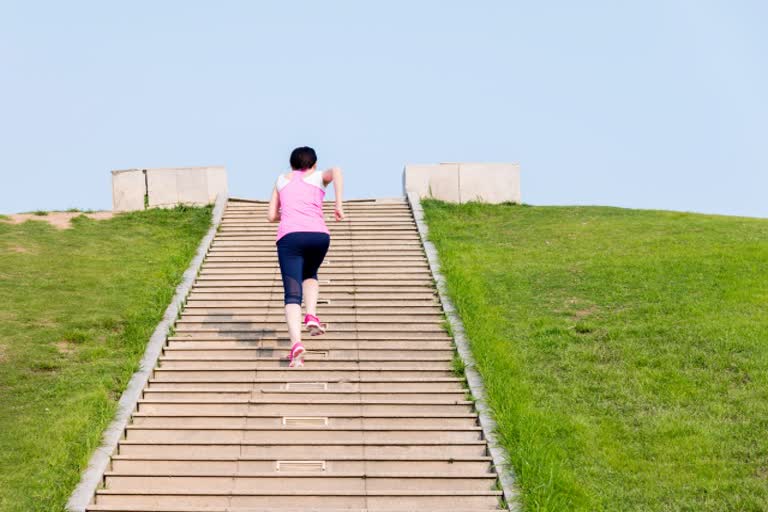According to a study published in PubMed, in 2019, Age-induced physiological changes such as declining strength, endurance, balance, and cognitive decline, adversely affect the activities of daily living. It is well documented that regular physical activity (PA) helps older adults improve their health, maintain independent living, and enhances their overall quality of life.
Stair climbing provides a feasible opportunity for increasing physical activity in daily living. The purpose of this study was to examine the daily walking and stair-climbing steps among healthy older adults
Taking stairs is a frequently available form of physical activity that requires no special training or equipment. Stair climbing uses 8–10 times the energy requirements of the resting state, which makes stair climbing a vigorous daily physical activity
Vertical Movement
When we walk or run, our body moves in a horizontal pattern. While running, it slightly experiences vertical movement. But, when you negotiate a staircase, our muscles have to resist gravity to move vertically. Thus we spend more calories in a short time. Our leg muscles must repeatedly lift the body against the pull of gravity and stabilize it on every step.
This is more beneficial than running or walking. Moreover, the stairs are readily available everywhere. So, from now on prefer to take stairs instead of an elevator. You don’t need to wear a special dress or have any sports equipment for this workout. Weather conditions never bar you from doing this because you do it indoors.
Benefits
While climbing, we burn double the amount of fat than while we are walking. Fifteen minutes of stair-climbing burns 250 calories. The intensity of stair climbing also determines the aerobic benefit. If we casually climb the steps benefits are slightly higher than running. If you climb briskly the benefits are greatly enhanced.
Climbing stairs increases heart rate, builds muscles, reduces cholesterol, burns fat. If you can climb two steps at a time you burn more calories because the leg muscles and buttocks work more. The sports medicine notes that climbing 10 steps of stairs is equivalent to taking 38 steps on level ground.
Stair climbing activates core muscles in the legs, such as hamstrings, quadriceps, calf, and gluteal muscles. As a result, legs become stronger and enhances movement. For those who underwent bypass surgeries and other debilitating health problems, stair climbing is a good exercise at home in a safe environment.
Also Read:Stuck At Home? Seven Tips To Get Started With Fitness
